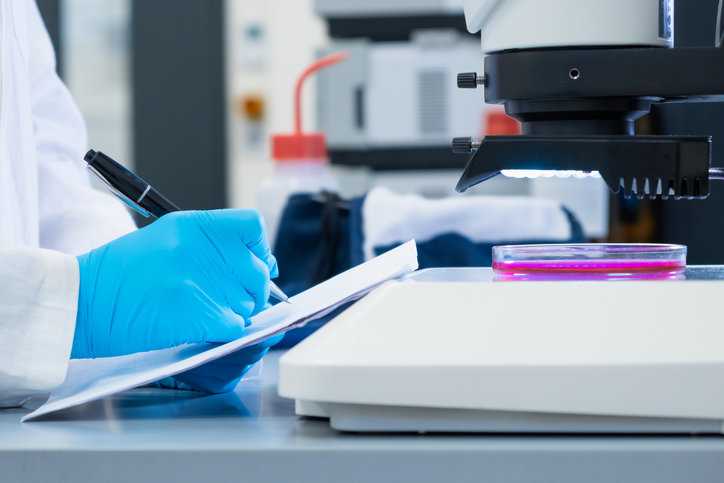Laboratories often work with reference materials (RMs) for equipment calibration, method validation, general research, and quality control. Reliability in RMs is essential because any fault in the RM can cause major imbalances and inaccuracies in testing and calibrations. This kind of inaccurate and unreliable data in the scientific and technological disciplines is mitigated by purchasing RMs from a competent producer, ideally one accredited by an ILAC-signatory accreditation body for ISO 17034:2016— General Requirements For The Competence Of Reference Material Producers.
What Is ISO 17034?
ISO 17034:2016 outlines the general requirements for the competence and consistent operation for the producers of reference materials (RMs), including certified reference materials (CRMs). It covers the production of all RMs and sets out general, structural, resource, technical and management system requirements. The standard is used by reference material producers to plan, implement and maintain quality assurance procedures. It is also used by accreditation bodies to perform third-party assessments of reference material producers (RMPs).
ISO 17025 VS ISO 17034
ISO 17034:2016 is aligned with the relevant requirements of ISO/IEC 17025:2017, the standard for competence of testing and calibration laboratories, and is specifically designed to provide a framework for reference material producers (RMPs). ISO 17034 utilizes the technical requirements of testing and expands on it for direct application to the production of RMs, including stability and homogeneity studies, statistical requirements, and production and shipping requirements, for example. While ISO 17034 includes the technical requirements of ISO/IEC 17025 relevant to any testing performed by an RMP, it also includes common requirements of ISO 9001.
Reference Materials
A reference material (RM) is a material, sufficiently homogeneous and stable with respect to one or more specified properties, which has been established to be fit for its intended use in a measurement process. RMs are used in all stages of the measurement process, including for method validation, calibration, and quality control. They are also used in interlaboratory comparisons, for method validation and for assessing laboratory proficiency. RMs are accompanied by a product information sheet.
Certified Reference Material
A certified reference material (CRM) is a reference material (RM) characterized by a metrologically valid procedure for one or more specified properties, accompanied by a reference material certificate that provides the value of the specified property, its associated uncertainty, and a statement of metrological traceability. Simply put, CRMs are provided with a certificate with information on certified value(s), measurement uncertainty, and traceability.
While both RMs and CRMs are produced by RMPs, they are different: Reference Material (RM) vs Certified Reference Material (CRM). It is important for laboratories to understand the differences between RMs and CRMs, especially when metrological traceability is being considered.
Why Are Reference Materials Used in a Laboratory?
Reference materials (RMs) and certified reference materials (CRMs) are used for many different purposes in a laboratory. The use of the materials dictates whether a RM or a CRM should be used in the laboratory.
RMs should be used:
- To assist with the development and validation of accurate methods of analysis, ensuring traceable measurement results at a working level where metrological traceability cannot be established.
- To verify that measurement methods in current use are performing according to established performance levels.
CRMs should be used:
- To calibrate measurement systems.
- To assure the long-term adequacy and integrity of measurement quality assurance programs.
- To use as test materials for inter-laboratory comparisons and proficiency testing programs.
- To establish metrological traceability of measurements performed in the laboratory.
Reference Material Producers
Reference materials producers (RMPs) are a body (organization or company, public or private) that is fully responsible for project planning and management; assignment of, and decision on property values and relevant uncertainties; authorization of property values; and issuance of a reference material certificate or other statements for the reference materials it produces. Theyare organizations that take responsibility for all aspects of the development, production, and optional certification of reference materials. RMPs provide information about their materials in the form of RM documents and demonstrate their competence in producing RMs of appropriate quality. Therefore,the demonstration of the scientific and technical competence of RMPs is a basic requirement for ensuring the quality of RMs.
ISO 17034 Accreditation
ANAB’s ISO 17034 Reference Material Producer (RMP) Accreditation is created for any manufacturers involved in the production of reference materials. It allows RMPs to demonstrate their competence in the production of certified reference materials (CRM) and reference materials (RM) by complying with international criteria specified in ISO 17034:2016. Further, it evaluates the methods and procedures used by manufacturers for the certification of CRM. The goal of ISO 17034 accreditation is to provide 3rd party assurance of the quality of produced RMs.
Benefits of ANAB’s ISO 17034 Reference Material Producer (RMP) Accreditation
ISO 17034 RMP Accreditation demonstrates that a reference material producer can provide reference materials (RMs) that have been subjected to technically valid procedures. This accreditation enables the accredited organizations (RMPs) to operate competently and gain consumers’ confidence in their products. When laboratories purchase RMs from an accredited RMP, it removes a component of the laboratory’s requirements to evaluate producers to a much higher degree who are not accredited.
In sum, here are the advantages of ANAB’s ISO 17034 Reference Material Producer (RMP) Accreditation:
- Recognition of technical and scientific competence
- Builds customer trust
- Offers a competitive market advantage
- Provides the opportunity for improved organizational outputs and efficiency
- Fosters continuous improvement within an organization
- Improves product quality by ensuring impartiality in the production of reference materials
- Exhibits the organizations’ expertise in producing reference materials
- Demonstrates credibility, making it easier for organizations to establish and maintain relationships with customers, regulators, and accreditation bodies
- Builds consumer confidence in the safety and quality of reference materials
- Assures the quality of CRM and RM production through conformance to ISO 17034:2016
ISO 17034:2016— General Requirements For The Competence Of Reference Material Producers is available on the ANSI Webstore.
